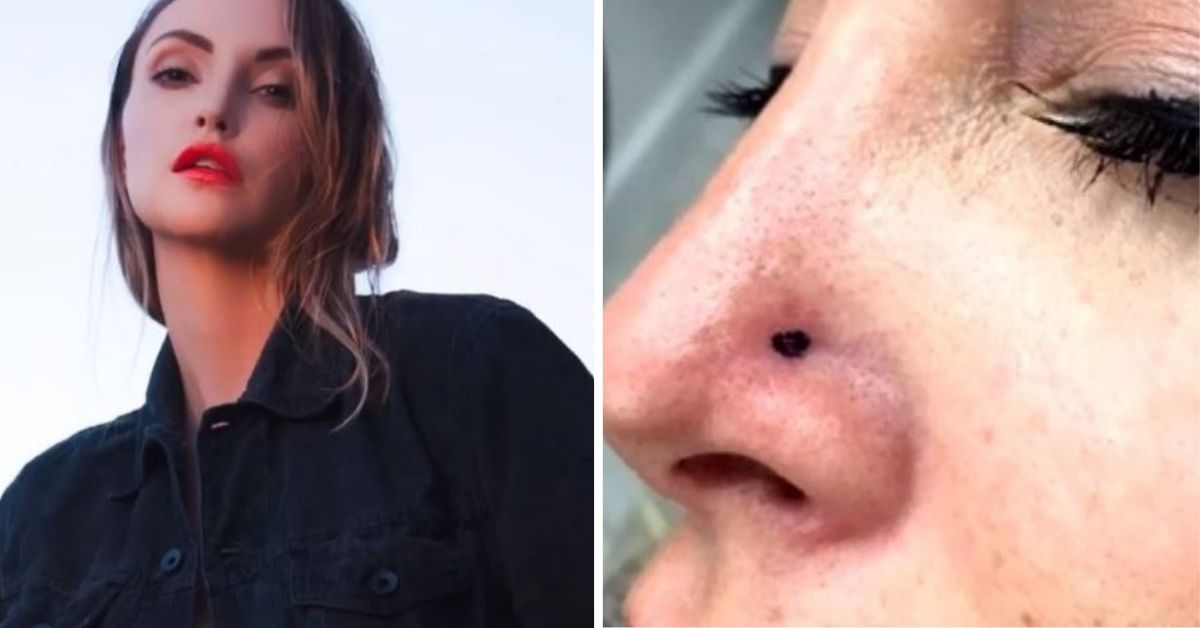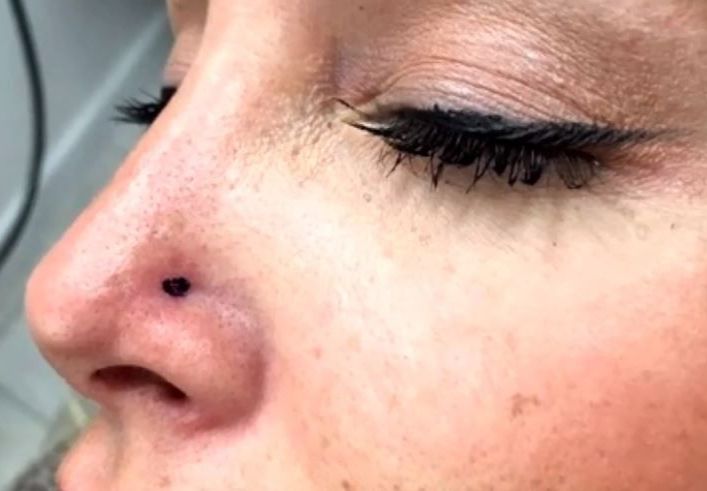At one point or another you've surely come across a warning telling you that you should never pop a pimple.
This is because it could become irritated or even infected, especially if the blemish is located in the "danger triangle," which encompasses the bridge of your nose, corners of your mouth, and upper lip.
However, when a pimple keeps on appearing again and again on the same spot, it can get annoying and many of us would just proceed to poke and prod the pimple anyway, hoping that one day it would disappear for good. We never immediately assume a pimple could be life-threatening.
In 2016, a young woman named Cailin was dealing with this exact issue. An irritating pimple appeared on one side of her nose and even after it popped, bled and scabbed over, it would return.
For a while, Cailin tried to convince herself that it was just another pesky blemish, but eventually gave in to her gut feeling and sought out a doctor's opinion.
After her visit to with dermatologist Dr. Sonia Batra, a biopsy determined that what she thought was a pimple was actually a type of skin cancer called infiltrative basal cell carcinoma.
Cailin had to undergo a surgical procedure to remove the cancerous growth, but it wasn't the quick fix she and Dr. Batra hoped for. The cancer was much more serious than imagined, and she had to be referred to a plastic surgeon.
While appearing on the daytime medical talk show The Doctors, plastic surgeon Dr. Kian Karimi admitted that while "nasal reconstruction is always challenging," Cailin's was "the most complex case" he has ever encountered.
Dr. Karimi had to take off parts of Cailin's nose one layer at a time, over the course of two weeks. Once the cancer was gone, he was able to start repairing the nose.
"The first time I saw my face, I took off the bandage and almost passed out," Cailin said on the show.
After going through such a terrifying ordeal, Cailin is thankfully healthy now, and is working on spreading her story so people don't dismiss the warning signs for skin cancer. She appeared on the show to raise awareness about skin cancer, and urge people to seek a medical professional as soon as they sense something is wrong.
While there are many forms of skin cancer, infiltrative basal cell carcinoma is the most common type in the United States. If caught early, it can be easily treated, however if diagnosis is delayed, it could even be fatal.
Here's what you should know
Dr. Batra urges people to know the ABCDE's of skin cancer, an acronym that stands for:
Asymmetry - one half of the mole doesn't match the other half.
Border - the borders appear uneven.
Color - the mole looks brown, tan or black.
Diameter - the mole is bigger than a 1/4 inch or the size of a pencil eraser.
Evolution - the growth changes in shape, color, size, or shows other symptoms, like bleeding.
You should also keep an eye out for a pimple that doesn't heal and continues to grow after a few weeks.
"Anything pearly or pink that has been there for more than a month should be evaluated," Dr. Batra added.
OB/GYN Dr. Nita Landry also pointed out the importance of checking for pimples and sores that appear on other parts of the body, especially the nether regions.
Most importantly, always remember to wear sunscreen. This is the first step to protecting your skin from the harmful rays that could increase your risk of skin cancer.
[S/T: The Doctors]

